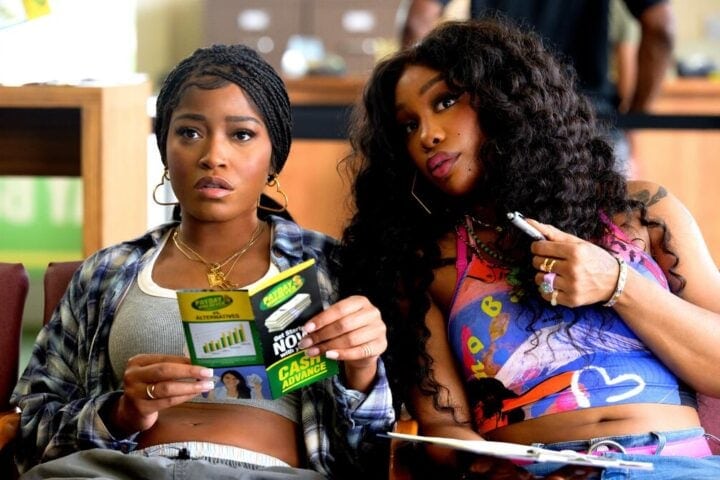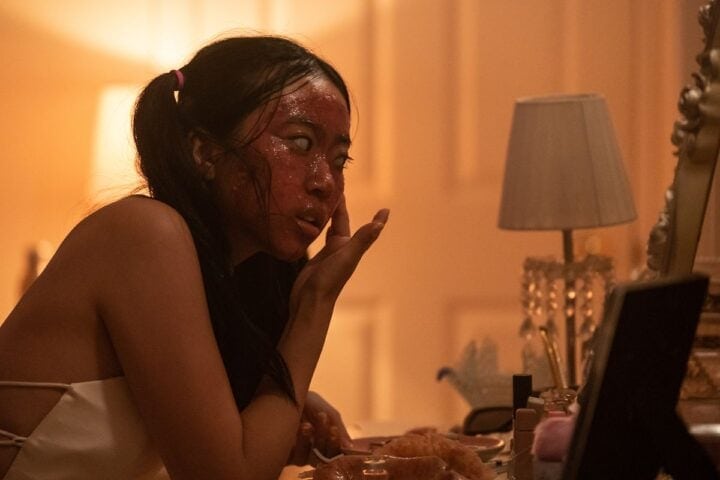For all the adulation that David Lynch, who died on January 16 at the age of 78, justifiably enjoyed for his artistry, there was a side to his work that was somewhat under-heralded: its earnestness. The boy-scout character of his interviews was almost certainly shtick, but there’s a despair to his movies that grounded even his wildest impulses in a fairy-tale directness that correlates with the shrewd yet wide-eyed persona that he presented to the public.
All of Lynch’s films are about innocence and idealism corrupted, and everything else stems from that confirmation of futility. In 1977’s Eraserhead, Jack Nance’s Henry is brought to madness over the frustrations of caring for his sick, deformed child, and his hopelessness is pushed to a breaking point that redefines his view of himself and sends him spiraling into new dimensions, following a rootless path of damnation that’s strikingly similar to the territory later treaded by the heroes of such films as Blue Velvet, Mulholland Drive, and Inland Empire.
Eraserhead, Lynch’s first feature film, which he made while studying at the American Film Institute (AFI) and on a budget of $100,000, is an extraordinarily raw work of art that’s not so much an announcement of its maker’s obsessions, but a complete, intimate, and heartbreaking fulfillment of them. You watch the film’s detonation of the nuclear-family arrangement and wonder if Lynch had to explain himself to his own loved ones afterward.
Lynch’s art pivoted on an urge to both objectify and empathize with women, which he nested in a love for America that was itself complicated by an awareness of the country’s foundation of patriarchal rot. Lynch was drunk on archetypes, on the pure blond damsel in distress and on the duplicitous brunette who can teach a young man the politics of sex. And he was also drunk on the iconography of Americana—coffee, diners, neon signs, and more—as well as murder-mystery conventions and the cultural after-effects of starlets being eaten alive by Hollywood.
One of Lynch’s greatest creations, Laura Palmer, haunted the town of Twin Peaks as an embodiment of the price that women pay for male fantasy. Like every other female protagonist in a Lynch film, Laura is torn between honoring the rules of a male-driven society and satisfying an unknown element of herself. Lynch undermined American iconography with perverse narrative detours or elaborate tableaux of pain, revealing the rot beneath all that is manicured.
The most direct metaphor in Lynch’s canon arrives early on in 1986’s Blue Velvet, for which he earned his second of three Oscar nominations for best director. After an opening credits sequence set against blue velvet curtains and accompanied by Angelo Badalamenti’s swooning score, Lynch offers up a montage of classic Americana, including gleaming white picket fences, a fire truck with a Dalmatian sitting on its sidestep, and roses that gleam with a feverish red hue.
Bobby Vinton’s version of the title song serves as the soundtrack to these images, and, with this song, Lynch signaled both his yearning for and disbelief in this idyllic world—a conflict in emotions that would drive his subsequent film and television productions. In case this conflict is lost on viewers, Lynch ends his montage with a father collapsing from a malady as he waters his front yard, and the camera homes in on blades of grass, pressing further into the ground until we can see black insects festering underneath the surface.
It’s too simple to say that Lynch yearned for a society that could be likened to that of The Andy Griffith Show’s Mayberry, even though much of his work is a viscerally textural paean to vintage American manners and artifacts. The 1950s-era puritanism that partially drives Blue Velvet and the iconic television series Twin Peaks most likely bored Lynch on its own. Lynch was attracted to duality, to the contrast of the sweet and sour textures of purity and perversity, and Blue Velvet was the filmmaker’s first pure articulation of that desire.
But his subversiveneess is also a reason why many audiences resented him, and why films such as Fire Walk with Me took time to earn their reputation. Like Twin Peaks: The Return, that film often elides the coffee, donuts, and talk of cherry pie that are fondly associated with the original series. The film’s set pieces—like the dinner scene in which Leland’s (Ray Wise) possession of Laura (Sheryl Lee) is equated to his revulsion with her fingernails—anticipate a fissure in a reality/fantasy continuum. Laura is in danger of waking up from her drug- and sex-addled stupor of denial, and so she must die to restore order to Twin Peaks and male America at large. One of Fire Walk with Me’s final images involves old men feasting on Laura’s misery, which is symbolized by an insane and absurdist Lynchian flourish: creamed corn, a staple of Americana.
In the second-season finale of Twin Peaks, Laura told Kyle MacLachlan’s Agent Dale Cooper in the Black Lodge that they weren’t done. In The Return, Dale can’t accept his limitations, as he has his own version of Laura, the eternally rescuable victim, to guard. Dale’s actions may or may not lead to the obliteration of Twin Peaks, which may or may not be a happy ending—a casting out of the mythology that America uses to paper over its legacy of atrocity. Fire Walk with Me is also an act of exorcism, as Lynch turned a MacGuffin into a human casualty, plumbing the recesses of his id and art to create one of his greatest films.
When viewers first see Naomi Watts’s Betty in Mulholland Drive, Lynch’s greatest triumph, she’s stepping out of an airport, bathed in so much sunshine as to offer a visual pun about her naïve, unsullied, “sunny” nature. For quite a bit of the film, Betty talks in a melodramatically declarative manner that will be familiar to fans of Twin Peaks and Blue Velvet. Immediately, though, there’s a difference in Mulholland Drive, which landed in the top 10 of the most recent Sight & Sound critics poll of the greatest films of all time, from some of Lynch’s past work, as Betty’s declarations don’t resound with an implication of mockery. (Roger Ebert was mostly, but not quite entirely, wrong about Blue Velvet and Lost Highway, as there can be a smug dimension to Lynch’s obsession with the lies inherent in the myth of “Americana.”)
But Lynch never judges Betty. He’s on her wavelength, protective of her in a fashion that isn’t leering or condescendingly paternal, like the attitudes of every man she’ll encounter in the film. When Betty exclaims, “Won’t that be the day!” in response to an elderly couple that says they’ll look for the aspiring actress on TV, you aren’t primed to laugh. This line is poignant the first time you watch Mulholland Drive, unaware of where its narrative is headed, and it’s emotionally devastating the second, third, or fourth time you watch the film, aware of its punchline.
The film’s twist is that there isn’t much of a mystery. Lynch’s “dark” and “light” women aren’t as comfortably differentiated as they are in Blue Velvet. Here, they’re humans of glorious, damaged multitudes caught in the net of the myth of transformation offered by American movies, which is a reinforcement and a distillation of the great myth of reinvention that defines America.
Mulholland Drive has been read as a deconstruction of the way that Hollywood eats women alive, turning them on each other and themselves, favoring the men pulling the levers behind the scenes, and it certainly is that, to the point that you wonder if Lynch was offering a free-associative mea culpa for the lurid, hard-edged sexuality of some of his other films. In the greatest scene of his career, Lynch stages an acute examination of sex as a woman’s enforced social defense, a simultaneous instrument of marginalization and empowerment.
Like Betty, Lynch was in love with his fantasies, but he recognized that many of them, particularly as shaped by corporate Hollywood, were built on nightmares, complicating the pleasure they bring. With this epic tapestry, one of the richest, finest, and most bottomless of all films, Lynch channeled the elusive and contradictory textures of desire, moving beyond either/or dichotomies of good and evil or black and white. Or brunette and blonde.
Since 2001, we've brought you uncompromising, candid takes on the world of film, music, television, video games, theater, and more. Independently owned and operated publications like Slant have been hit hard in recent years, but we’re committed to keeping our content free and accessible—meaning no paywalls or fees.
If you like what we do, please consider subscribing to our Patreon or making a donation.




“Blue Velvet” was not his first Oscar nomination for director. He was first nominated for “The Elephant Man” in 1980. I enjoyed the article but would have liked to see that movie and “The Straight Story” his most unLynchian film on the surface, mentioned as well.